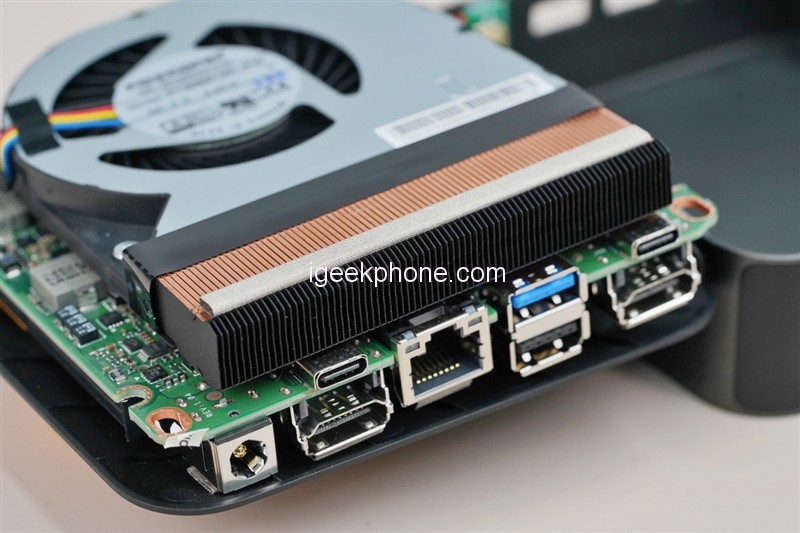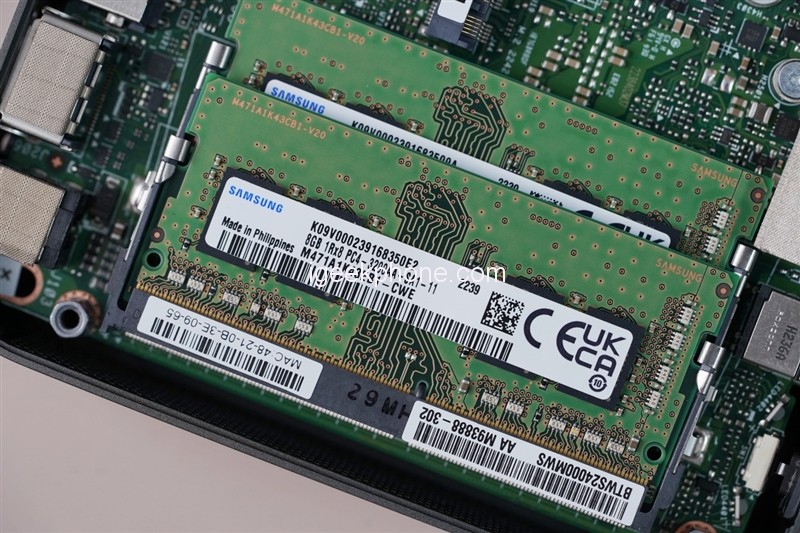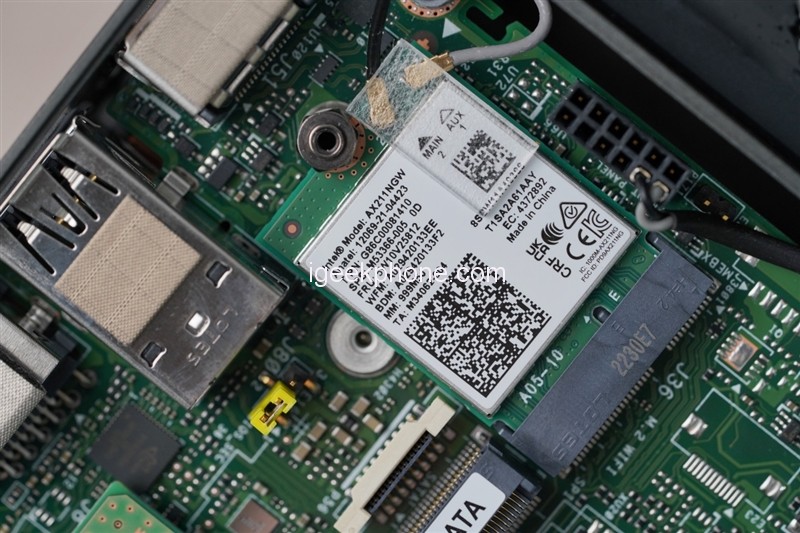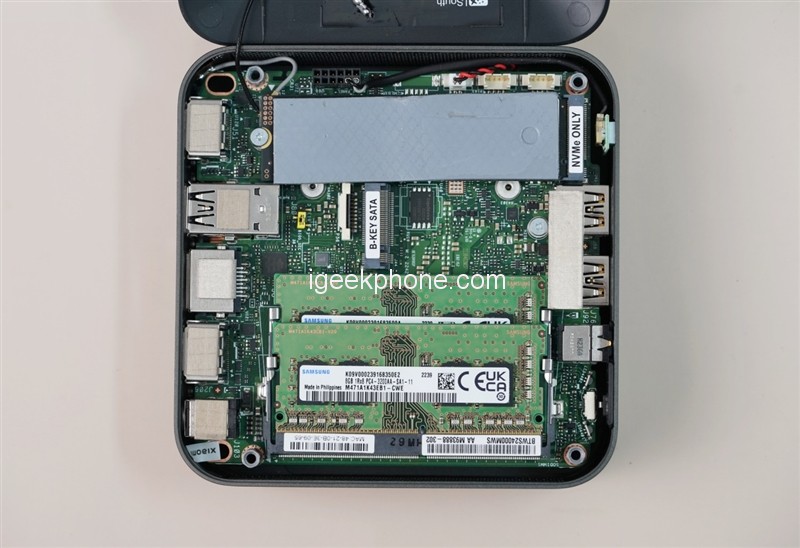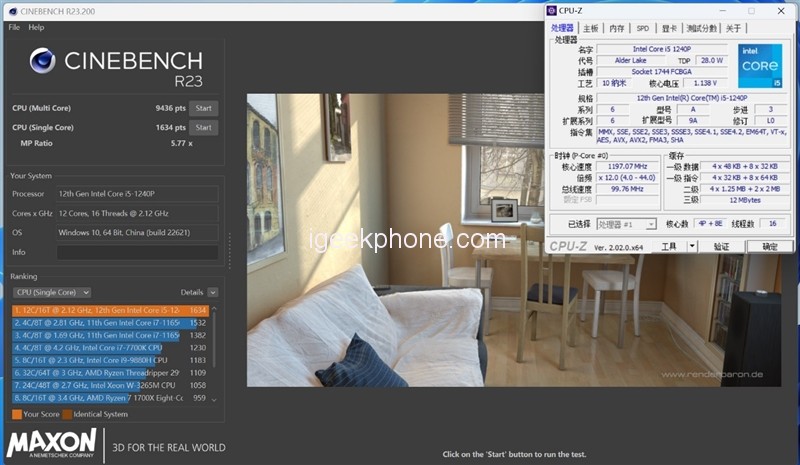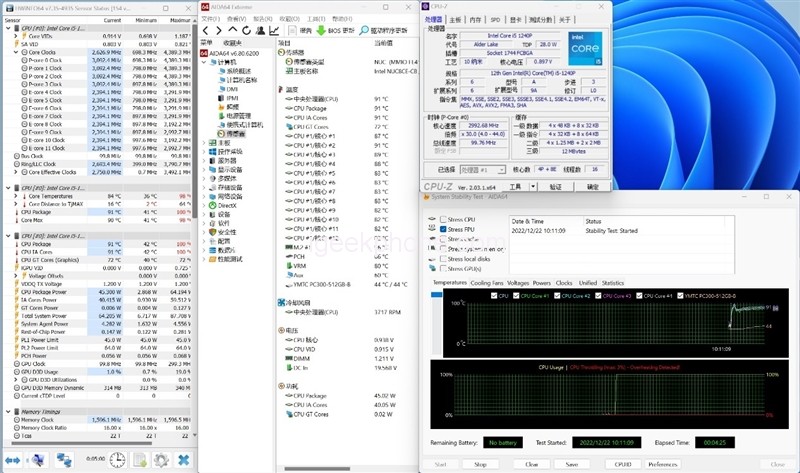With the times’ development, PC users’ needs are also constantly improving. Smaller, cleaner and more integrated personal computer products will lead to PC development.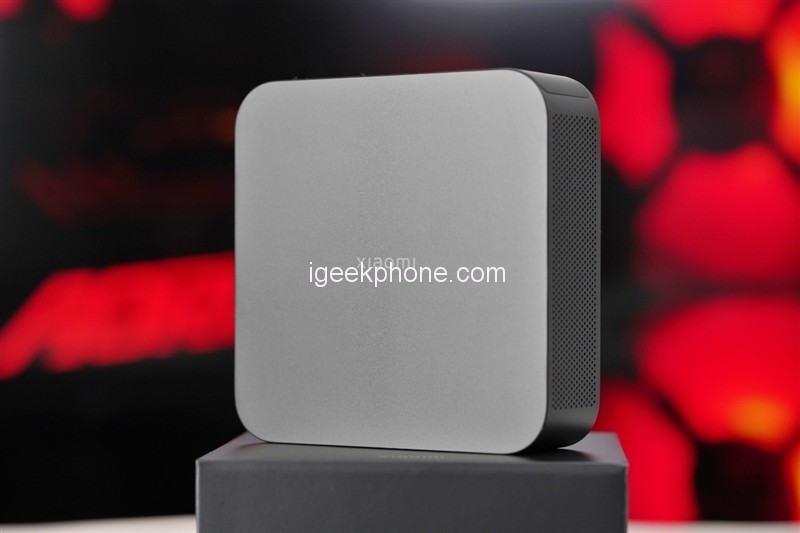
Intel NUC has always been the industry benchmark for ultra-mini computers. Now Xiaomi has finally broken into this market. At the Xiaomi 13 & MIUI 14 new product launch conference held a few days ago, Xiaomi brought its first desktop host – Xiaomi Mini Host.
It can be said that the Mi mini host and the Intel Wall Street Canyon NUC 12 have the same origin, and there is no difference in configuration and performance. The difference is that Xiaomi adopts a better CNC-integrated fine carving process, and the firmness and external texture of the fuselage are significantly better than Wall Street Canyon.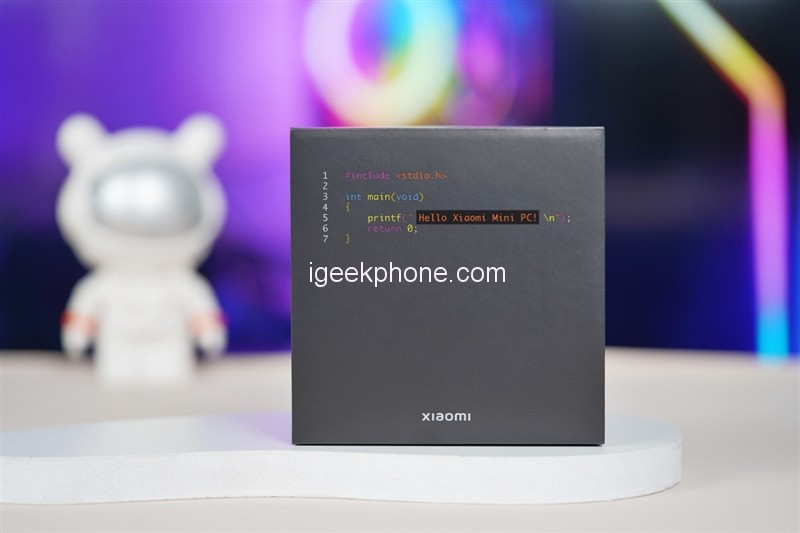
In terms of price, the Xiaomi Mi Mini host with 16GB memory and 512GB SSD is only 3699 yuan, compared with 3999 yuan for the Wall Street Canyon NUC 12 with the same configuration. This is what Xiaomi can bring us: better products at a lower price.
The Xiaomi Mi Mini host is equipped with Intel’s 12th generation Core i5-1240P processor, based on the new generation of Intel 7 process technology, 4 P-Core + 8 E-Core, a total of 12 cores, and 16 threads. With the release of 33W performance, the multi-core performance is equivalent to 180% of the previous generation i7-1185G7.
In terms of storage, the Xiaomi Mi Mini host has built-in dual-channel DDR4 3200MHz 16GB memory and Yangtze River Storage 512GB PCIe 4.0 SSD, which can also be expanded with a second M.2 SSD.
Design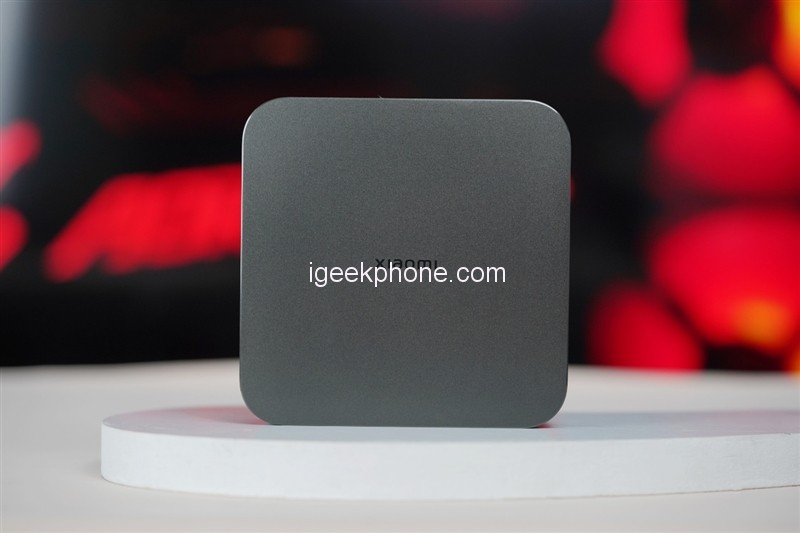
The back of the box is very interesting, with a few lines of code printed, which says “Hello Xiaomi Mini PC”. The main body of the fuselage adopts CNC integrated fine-carving process. The main material of the aluminum alloy and the bright metal chamfer look full of texture, the touch is delicate and moist, and it also has a certain gloss.
The measurements of the host are 112 x 112 x 39mm, the volume is only 0.444L, equivalent to 1/100 of an ATX case, and the net weight is 0.437kg, which is about the importance of two 6-inch mobile phones. The measured net weight is 434g.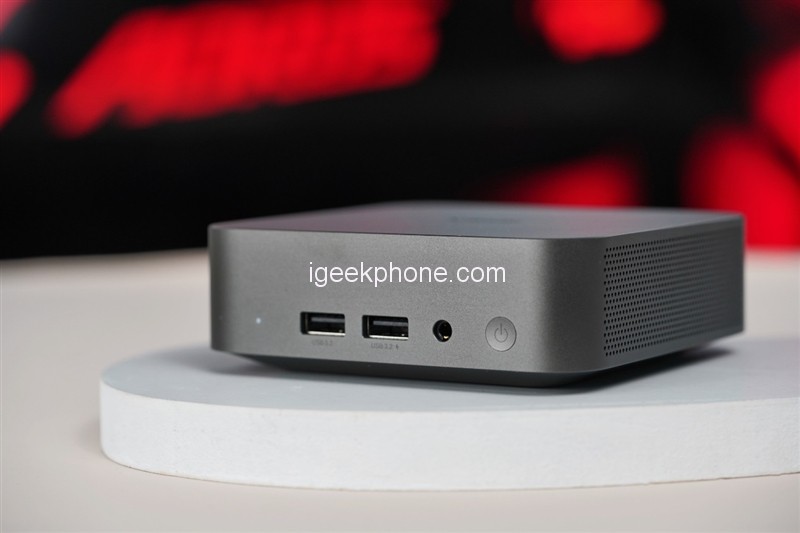
There are 4-foot pads at the bottom. Remove the foot pads and the 4 screws inside to disassemble the host. There are 2 USB 2.0 and a 3.5mm headset-in-one interface on the front, next to a power button. There is a 2.5G network port, 1 USB 3.0, 1 USB 2.0, 2 HDMI 2.0, and 2 Thunderbolt 4 ports on the back. The circular power jack is on the far left.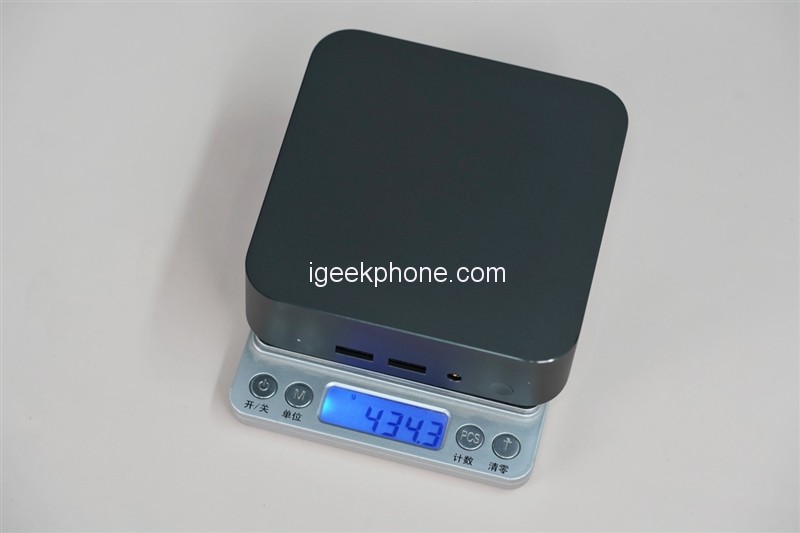
Next to it is the ITX case made by Xianmaqu. When you disassemble the host, you can see 2 SO-DIMM slots, 1 M.2 2280 and 1 M.2 2242. Generally speaking, the capacity can meet the needs of most office users.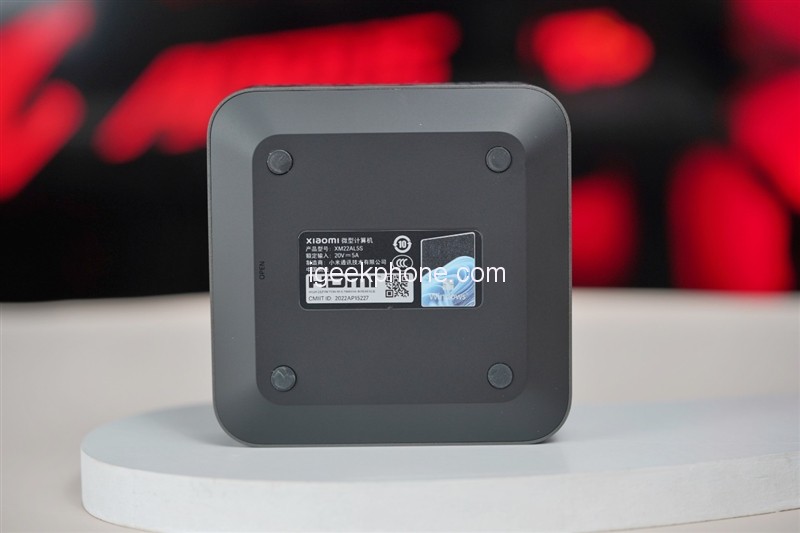
The Xiaomi Mi host comes with a YMTC PC300 512GB SSD, which uses YMTC’s third-generation NAND particles based on Xtacking 2.0 technology. The main controller is Silicon Motion SM2267XT, which adopts a DRAM-Less design and uses HMB buffer technology to directly use system memory as a dynamic cache, eliminating the need for a separate DRAM cache. Intel AX211 Wi-Fi 6E wireless network card, the maximum connection speed can reach 2400Mbps, and it has a built-in Bluetooth 5.3 module.
2 SO-DIMM slots with 2 Samsung DDR4 3200MHz memory inserted. It’s not too difficult to get the motherboard out. The cooling system consists of a large fan and 2 pure copper heat pipes. The area of cooling fins is as high as 44753 square millimeters, nearly four times that of mainstream thin and light notebooks. After all, notebooks can’t make fins so thick.
Performance
1. CPU-Z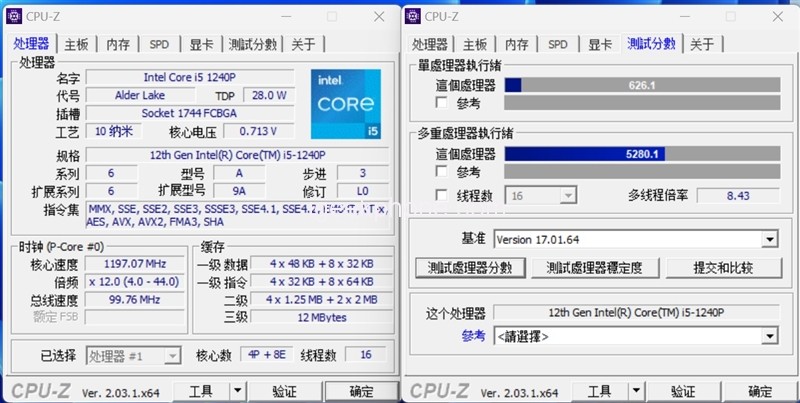
The i5-1240P has a single-threaded score of 626 and a multi-threaded score of 5280.
2. CINEBENCH R15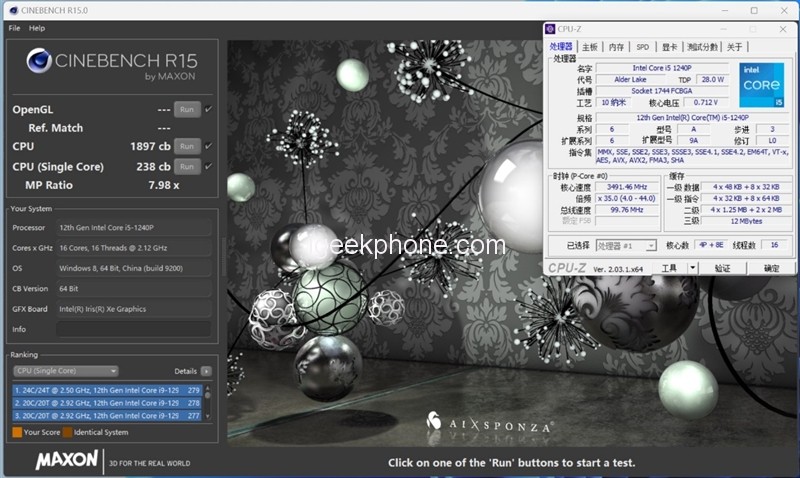
In the CineBench R15 test, the single-thread score of i5-1240P is 238cb, and the multi-thread score is 1897cb.
3. CINEBENCH R20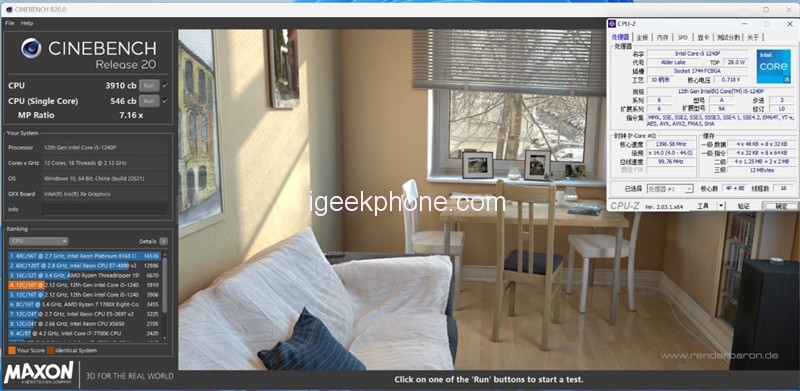
In the CineBench R20 test, the i5-1240P has a single-thread score of 546 and a multi-thread score of 3910.
4. CINEBENCH R23
In the CineBench R23 test, the single-thread score of i5-1240P is 1634cb, and the multi-thread score is 9436cb.
5. Hardware dog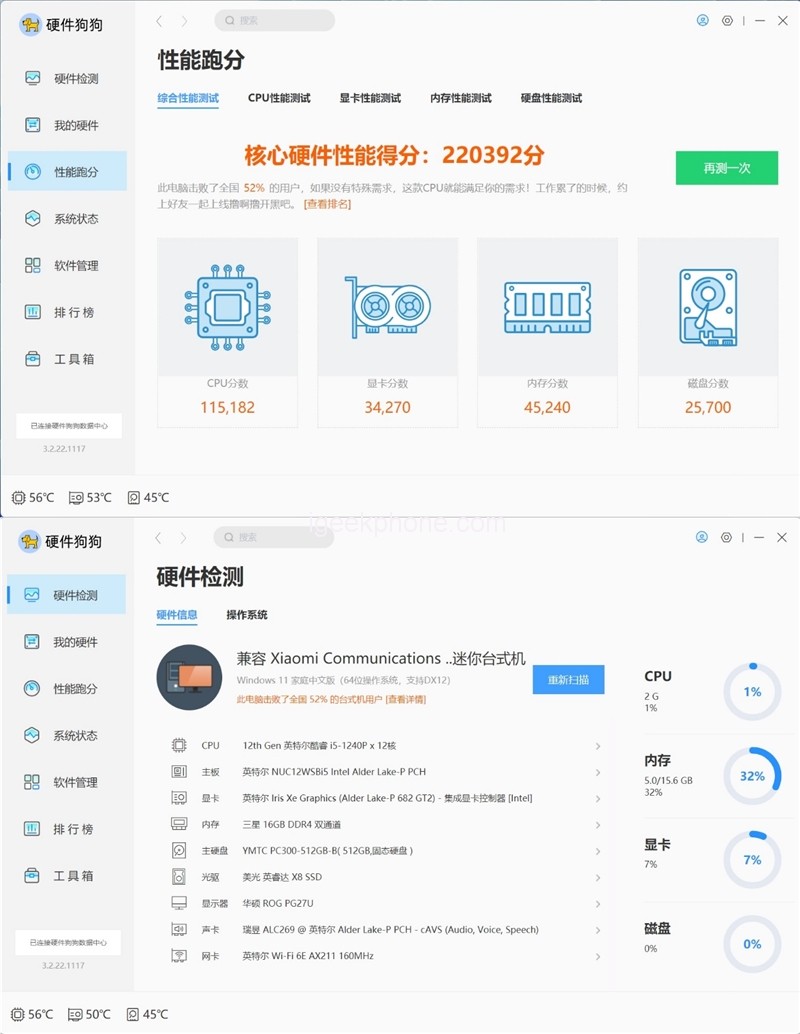
The total score of hardware Gogougou is 220,392, exceeding 52% of users nationwide. The i5-1240P scored 115182, the GPU score was 34270, the memory score was 45240, and the hard disk score was 25700.
Among them, the Iris Xe GPU got 34270, which is at the same level as the full-blood version of the MX250 or GTX 750.
6. SSD Benchmark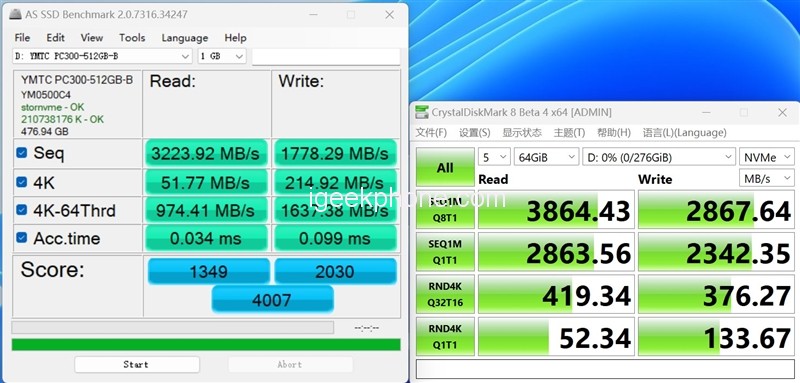
The Xiaomi Mi Mini host uses the PC300 512GB SSD from YMTC, an entry-level PCIe 4.0 SSD product specially developed by YMTC for the commercial market (OEM).
In the AS SSD Benchmark, the total score of this 512GB PCIe SSD is 4007, the sequential read and write exceed 3220MB/s, 1700MB/s, the 4K random reads are 51MB/s, and the random write is 214MB/s.
In the CrystalDiskMark test, the sequential read and write speeds reached 3864MB/s and 2867MB/s, respectively, and the 4K random reads and write speeds were 52MB/s and 13MB/s, respectively. The overall performance is very balanced, stronger than the high-end PCIe 3.0 SSD.
7. AIDA64 memory cache test 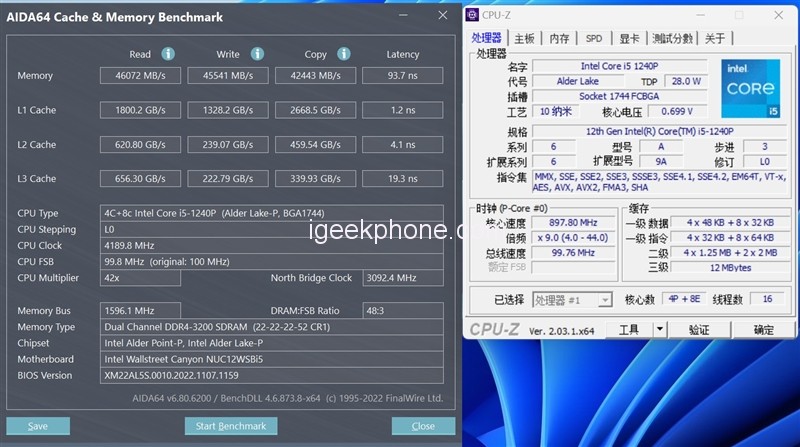
The Xiaomi Mi Mini host uses 2 Samsung DDR4 3200MHz 8GB memory, and the memory timing is 22-22-22-52 CR1.
The measured memory reads 46072MB/s, writes 45541MB/s, and 42443MB/s, with a delay of 93.7ns.
The test data is summarized as follows:
Since Xiaomi did not have similar products before, we compared the performance of this host with Intel’s previous generation Cheetah Canyon NUC11, which uses an Intel i7-1165G7 processor, and its performance release can reach 45W.
Compared with the previous generation i7-1165G7, the i5-1240P has an 8.2% performance advantage in single-core performance and a full 79% lead in multi-core performance.
Gaming Performance
1. 3DMark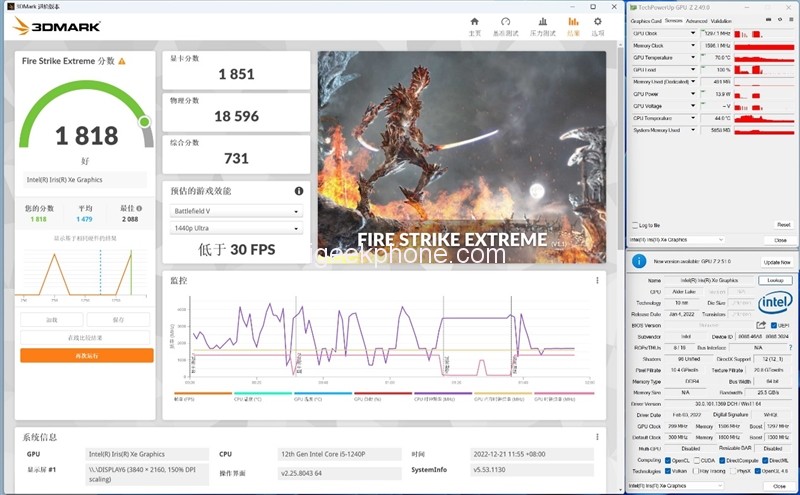
The i5-1240P integrates the Iris Xe GPU with 96 sets of EUs and a frequency of 1250MHz. Standby power consumption is only 8W! Xiaomi Mini Host Review: Better workmanship and lower price
In the 3DMark Fire Strike Extreme test, the graphics score of the Iris Xe GPU is 1851 points, which is comparable to the full-blooded MX 250 discrete graphics card.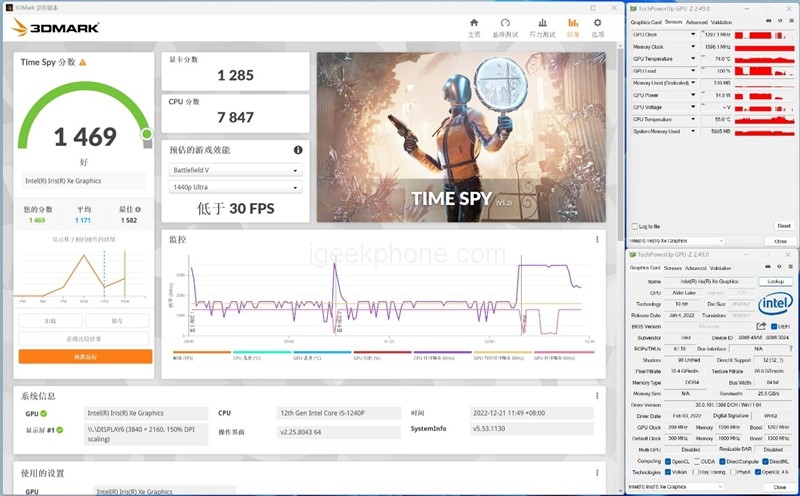
Standby power consumption is only 8W! Xiaomi Mini Host Review: Better workmanship and lower price
The score of 3DMark Time Spy is 1285, the maximum frequency of Iris Xe GPU can reach 1297MHz, the maximum temperature is 74 degrees, and the maximum power consumption is 14.8W.
2. World of Tanks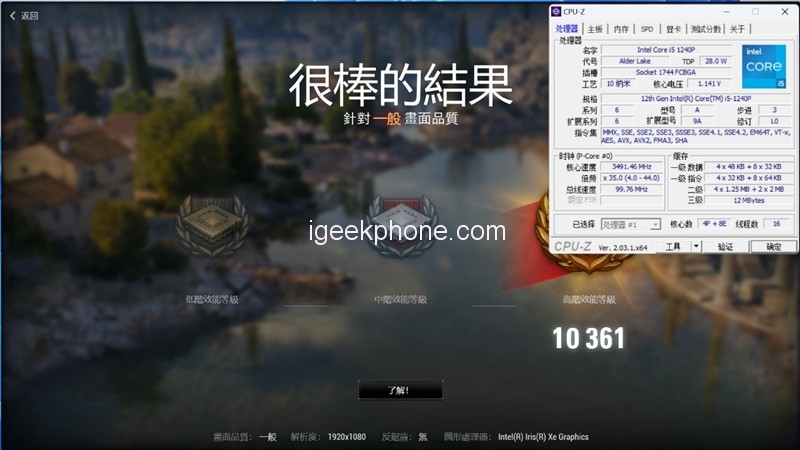
Standby power consumption is only 8W! Xiaomi Mini Host Review: Better workmanship and lower price
Under the general picture quality, the score of the Mi Mini console is 10361, which translates to a frame rate of 65FPS.
3. CS: GO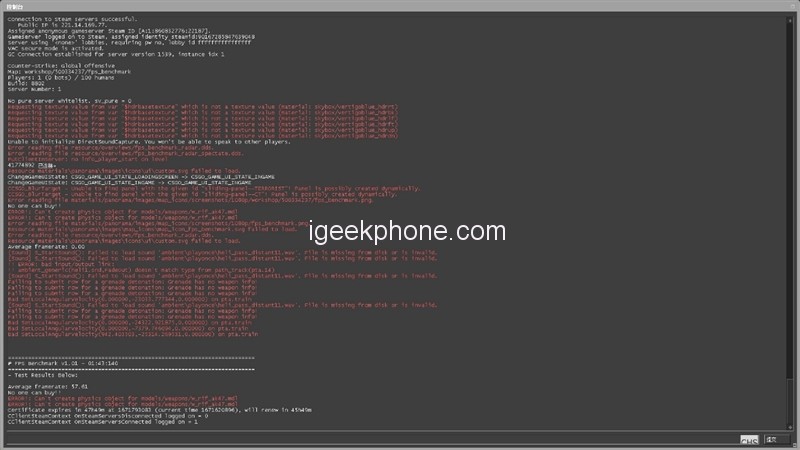
Standby power consumption is only 8W! Xiaomi Mini Host Review: Better workmanship and lower price
Under the highest quality of 1080P resolution, the score of “CS: GO” is 58FPS, which can basically run smoothly. If you want to get a higher frame rate, you also need to reduce the picture quality appropriately.
4. League of Legends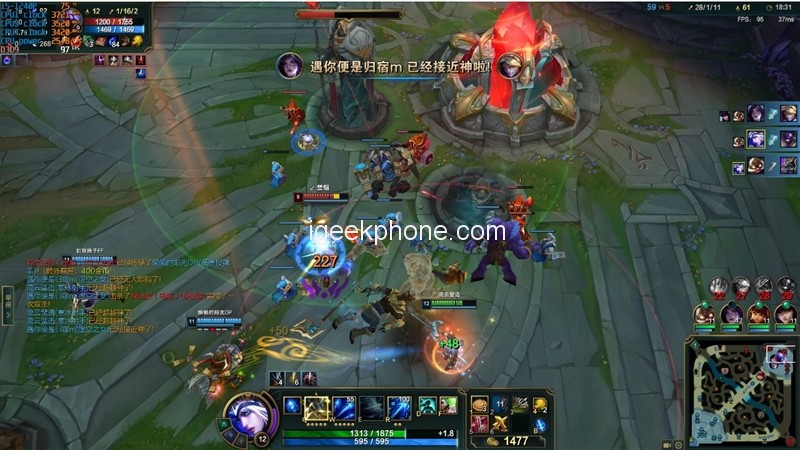
Standby power consumption is only 8W! Xiaomi Mini Host Review: Better workmanship and lower price
We played a game of LOL, which is also the highest quality of 1080P. In the final stage of the large-scale decisive battle, the Xiaomi mini host basically maintained above 95FPS throughout the whole process, and the i5-1240P has maintained a performance release of above 25W. The processor temperature is about 75 degrees. .
Consumption Test
1. Default oven test
As far as minicomputers and notebooks are concerned, no matter how powerful the CPU is, as long as the heat dissipation is not good, it won’t be easy to exert the true strength of the processor.
The Mi Mini host adopts a heat dissipation design with dual heat pipes and a large-diameter fan. The full-load speed of the fan is 4600RPM, and the area of the heat dissipation fin is 44753 square millimeters, nearly four times that of mainstream thin and light notebooks.
Using the AIDA64 FPU oven for 12 minutes, the temperature of the i5-1240P has been below 81 degrees. The power consumption of the stove can run to 51W at the beginning, and then it will drop to 33W preset by the BIOS. The frequency of the P-Core oven is 2.6GHz, E- The core frequency 2.2GHz.
When in the oven, there is almost no sound.
3. Unlock the 45W TDP oven test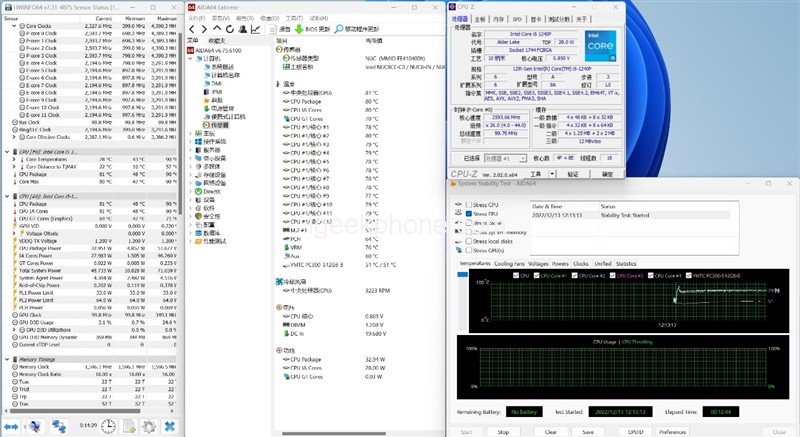
After the BIOS unlocked the processor’s power consumption from 33W to 45W, we conducted the oven test again.
Baking machine for 4 minutes, the power consumption of i5-1240P is stable at 45W, the temperature is below 90 degrees, and the frequency of the P-Core baking machine is greatly increased to 3.1GHz.
But the more serious problem is that the fan noise is very obvious at this time, which has already caused interference to work.
2. Power consumption test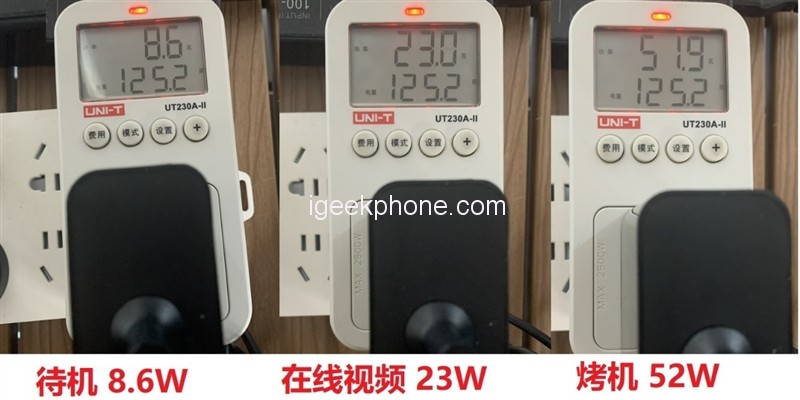
Power consumption is the strength of minicomputers/notebooks. After all, the conversion efficiency of the DC power supply is much higher than that of a traditional ATX power supply. In the standby state, the power consumption of the Xiaomi Mi Mini host is only 8.6W, equivalent to 1/10 of that of an ordinary desktop host.
When watching a 1080P high-definition video at station B, the power consumption of the whole machine is about 23W, which is less than 1/5 of that of ordinary hosts. When using the AIDA64 FPU oven for 10 minutes, when the CPU power consumption is 33W, the overall power consumption of the Mi Mini host is only 52W.
Read Also: Motorola Moto X40 Review: The 2nd Gen of Snapdragon 8
Verdict
If your needs are only for office work and Internet entertainment, do you need an ATX desktop host? Not!
Compared with conventional ATX hosts, the advantages of Xiaomi mini hosts are obvious.
The following is a summary of this test:
1. Power consumption
The standby power consumption of most ATX hosts is between 60~80W, while the standby power consumption of Xiaomi mini hosts is only 8W, only 1/10 of the former.
For normal office entertainment, the overall power consumption of the Mi mini host is just over 20W, and the power consumption of the grill is only 53W, which is lower than the standby power consumption of most desktop hosts.
For enterprises, many office hosts will increase the indoor temperature and the burden of air conditioning and cooling, which is neither low-carbon nor environmentally friendly.
Therefore, in terms of energy consumption, compared with traditional desktop computers, Xiaomi Mi host not only has extremely low power consumption but also can reduce the power consumption of air conditioners, which can save enterprises a considerable amount of electricity expenses in one year.
2. Body shape
The volume of a traditional ATX mainframe is about 40L, which takes up a lot of office desk space. The importance of the Mi Mini host is only 0.44L, equivalent to 1/100 of a traditional desktop, and can be placed in any suitable place. It is not a burden, even if you take it out.
3. Performance and noise
In terms of performance release, due to the natural advantage in thickness, the cooling fin area of the Xiaomi Mi host is four times that of traditional thin and light notebooks. With the radiator system of dual heat pipes and large fans, the i5-1240P can easily release 33W power. Performance while being virtually inaudible.
We also tried to unlock the processor’s power consumption to 45W in the BIOS. As a result, although the performance was improved, the noise was unbearable.
This shows that the BIOS of the Xiaomi Mi host has been optimized before leaving the factory, and there is no need for personal adjustments.
If you want a computer that can play 3A games, the mini computer is not good, but if you need a host for office and entertainment, in all respects, the desktop is out. An ultra-mini mainframe can save a lot of trouble. Although the initial purchase cost is a little bit expensive, the dedicated space and electricity costs are enough to cover the cost.
Do not forget to follow us on our Facebook group and page to keep you always aware of the latest advances, News, Updates, review, and giveaway on smartphones, tablets, gadgets, and more from the technology world of the future.










